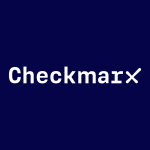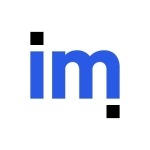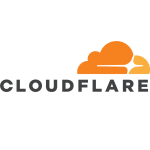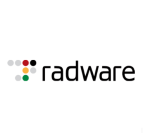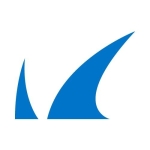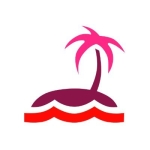
Project Manager at a outsourcing company with 1,001-5,000 employees
Achieved improved security compliance with comprehensive visibility across cloud environments
Pros and Cons
- "Overall, it's a good solution, and it fulfills all our core purposes, providing complete visibility and security."
- "The UI interface needs improvement because there are a number of bugs. Integration with the SIEM platform is currently one of the key challenges that need to be addressed."
What is our primary use case?
We have over ten root domains that we need to protect through the firewall. All our hosts are in EC2 instances, and it is challenging to protect them by using any AWS load balancer or shields. Therefore, we have implemented Check Point CloudGuard WAF as a solution to protect all these domains from the open internet. It supports all environments, including on-premises, Azure, AWS, and we have also implemented it for CDN URLs as well.
How has it helped my organization?
It has improved the overall security posture of our organization. Earlier, our security score was around eight to nine, which increased after implementing Check Point CloudGuard WAF. We have achieved NIST compliance, and now ninety-five percent of the environment compliance level is equal to ninety-five percent.
What is most valuable?
The support of the root domain is one of the best features, as is the support for the CDN and advanced load balancer. These are key features that differentiate Check Point CloudGuard WAF from other vendors. Additionally, rate limiting is another significant feature of the WAF.
What needs improvement?
The UI interface needs improvement because there are a number of bugs. Integration with the SIEM platform is currently one of the key challenges that need to be addressed.
Buyer's Guide
Check Point CloudGuard WAF
September 2025
Learn what your peers think about Check Point CloudGuard WAF. Get advice and tips from experienced pros sharing their opinions. Updated: September 2025.
868,759 professionals have used our research since 2012.
For how long have I used the solution?
We have been using Check Point CloudGuard WAF for the last six months.
What do I think about the stability of the solution?
I think Check Point CloudGuard WAF is stable.
What do I think about the scalability of the solution?
It is a SaaS-based model, and we have not encountered any scalability issues. They have sufficient resources, and there are no challenges from a scalability perspective.
How are customer service and support?
The customer support is good. They have skilled personnel to provide support.
How would you rate customer service and support?
Positive
Which solution did I use previously and why did I switch?
We did not use a different solution prior to this.
What was our ROI?
The return on investment is reflected in the improvement of the overall security posture. While it does not have a direct monetary impact, it enhances security with an improved NIST compliance score and better overall security scores for our organization.
What's my experience with pricing, setup cost, and licensing?
Pricing and setup costs are fine. It is less costly than Cloudflare, Fortinet, and other vendors. Additionally, it is less costly than the OEM.
Which other solutions did I evaluate?
We evaluated Cloudflare and Fortinet.
What other advice do I have?
I would advise others to use and implement Check Point CloudGuard WAF as a solution in the firewall segment. Check Point has been in this segment for two decades and is more stable than other firewall vendors. I recommend using it and implementing all the features it offers. Overall, it's a good solution, and it fulfills all our core purposes, providing complete visibility and security. That's why I rate it ten out of ten.
Which deployment model are you using for this solution?
Public Cloud
If public cloud, private cloud, or hybrid cloud, which cloud provider do you use?
Other
Disclosure: My company does not have a business relationship with this vendor other than being a customer.
Last updated: Apr 30, 2025
Flag as inappropriateInfrastructure Manager at FPMH
Handles multiple applications and sites effectively with decent pricing
Pros and Cons
- "The communication between the on-premises device and the cloud for analysis and feedback is a valuable feature."
- "The solution's ability to handle multiple websites and applications without needing more expensive hardware is a key advantage."
- "The learning curve was a challenge due to initially incorrect configurations."
- "The learning curve was a challenge due to initially incorrect configurations. It took approximately a month and a half to understand how the solution works because of inadequate documentation."
What is our primary use case?
I am currently evaluating a hybrid solution for our infrastructure since some of our services are hosted on-premises while others are processed through the cloud. We have multiple websites, applications, and some non-web-based applications that we need to protect.
What is most valuable?
The solution's ability to handle multiple websites and applications without needing more expensive hardware is a key advantage.
The communication between the on-premises device and the cloud for analysis and feedback is a valuable feature. It also supports legacy applications and improves security access. Upon implementation and evaluation with third-party penetration testing, it meets rigorous security standards required for dealing with financial institutions and provides necessary protection between our central office and peripheries through VPN access.
The solution allows for proactive support and parts replacement.
What needs improvement?
The learning curve was a challenge due to initially incorrect configurations. It took approximately a month and a half to understand how the solution works because of inadequate documentation. The provider could improve by providing better guidance and support during the configuration process.
How are customer service and support?
I am happy with their support. They were responsive even before we committed to buying their solution. The support rating is about seven and a half to eight out of ten.
How would you rate customer service and support?
Positive
Which solution did I use previously and why did I switch?
We looked at FortiGate and some open-source solutions, however, they either did not fully meet our requirements or required a dedicated person for administration, making them cost-prohibitive.
What about the implementation team?
We collaborated with our vendor, A1, which also offers parts replacement and support as part of the package.
What's my experience with pricing, setup cost, and licensing?
The base solution costs approximately 30,000 euros, with an additional 2,000 euros per year for licenses and support.
The price is fair for the features offered. For us, it is cost-effective compared to hiring a dedicated person for administration.
Which other solutions did I evaluate?
Prior to choosing the current solution, we considered FortiGate and other open-source solutions.
What other advice do I have?
I would rate the solution eight out of ten.
Which deployment model are you using for this solution?
Hybrid Cloud
If public cloud, private cloud, or hybrid cloud, which cloud provider do you use?
Other
Disclosure: My company does not have a business relationship with this vendor other than being a customer.
Last updated: Jan 9, 2025
Flag as inappropriateBuyer's Guide
Check Point CloudGuard WAF
September 2025
Learn what your peers think about Check Point CloudGuard WAF. Get advice and tips from experienced pros sharing their opinions. Updated: September 2025.
868,759 professionals have used our research since 2012.
Manager, Managed Security Services at a tech vendor with 51-200 employees
Real-time attack recognition and integration provide peace of mind while safeguarding websites
Pros and Cons
- "Support is the same with on-premise devices, and it is very good. Since it is cloud-based, I do not need them as much."
- "It helps me sleep at night, providing peace of mind."
- "If the price could come down, I would be very happy with the product."
- "Pricing is high, although possibly justified by the service received."
What is our primary use case?
Protecting our websites or our customers' websites is our top priority. We transitioned to Check Point WAF from on-premises WAF to safeguard our external perimeter. Essentially, I am focused on protecting our external infrastructure and web services.
How has it helped my organization?
It helps me sleep at night, providing peace of mind. It saves time, money, troubleshooting, and maintenance and reduces the need to hire people to manage the technology because it is so easy to use.
What is most valuable?
The WAF is the best feature. The application firewall's ability to block and recognize all attacks in real-time, such as DDoS, is invaluable. Identifying attacks and integrating with the rest of the ecosystem are features I am very fond of.
It's a pretty robust product.
CloudGuard protects against threats without relying on signatures. This is one of the best features. As an engineer, I don't have to review signatures one by one by one. 90% of the other players use signatures. So you have to review the attack, the signature, and how to mitigate it, etcetera. Removing the signatures from the equation removes a lot of time required for an engineer to review signatures, apply signatures, verify that these are applied to the infrastructure, etcetera. So removing that from the equation and protecting the infrastructure at all times is very cost-effective.
Signature-based also causes a lot of false positives. So having no signature also helps remove a lot of the false positives.
What needs improvement?
I cannot think of any needed features.
Pricing is high, although possibly justified by the service received. Reducing prices would be welcome.
Integration with more technologies or Check Point products, or on-prem products, could improve robustness. Many organizations are moving to the cloud. Some cannot fully transition and require solutions similar to on-prem devices.
For how long have I used the solution?
I have used the solution for the past two years.
How are customer service and support?
Support is the same with on-premise devices, and it is very good. Since it is cloud-based, I do not need them as much.
How would you rate customer service and support?
Positive
Which solution did I use previously and why did I switch?
I have used CloudGuard, Imperva Cloud WAF, and Barracuda Cloud WAF. I have experience with all of the major players.
What was our ROI?
I have seen what we were used to before and how much time we spent. We used to manage on-prem devices for other partners that could run from other vendors. When you migrate to the cloud, it feels like saving 90% of your time.
What's my experience with pricing, setup cost, and licensing?
If the price could come down, I would be very happy with the product.
Which other solutions did I evaluate?
I will not disclose which vendor is the best. In specific cases, some vendors perform well, while others are competitive at the high end. Check Point is one vendor that I really appreciate, and I will not mention the other, however the competition is very close.
What other advice do I have?
I would rate the solution nine out of ten. Nobody is perfect.
Disclosure: My company has a business relationship with this vendor other than being a customer. Partner Reseller
Last updated: Feb 13, 2025
Flag as inappropriateCyber Security Solution Engineer at a computer software company with 201-500 employees
Simplifies cloud security with quick integrations and highlights areas for enhanced customization
Pros and Cons
- "The automated policy creation and threat intelligence have helped my team by reducing manual configuration and saving time, and the threat intelligence updates ensure immediate protection against new threats, simplifying daily operations and improving response speed."
- "Check Point CloudGuard WAF could be improved by simplifying the initial setup for a faster deployment, making the dashboard and reporting more customizable, and offering a more accessible pricing model."
What is our primary use case?
My main use case for Check Point CloudGuard WAF is to protect web applications and APIs from OWASP Top 10, and it has helped to secure cloud workload and prevent unauthorized access to data leaks.
I use Check Point CloudGuard WAF to block SQL injection and cross-site scripting attacks, and we protect the API by enforcing strict access, automatically applying a security policy to new applications before deploying in the cloud.
What is most valuable?
The best features Check Point CloudGuard WAF offers in my experience include automated policy upgrade with threat coverage intelligence, flexible deployment, and zero-day protection, which stand out to me the most.
The automated policy creation and threat intelligence have helped my team by reducing manual configuration and saving time, and the threat intelligence updates ensure immediate protection against new threats, simplifying daily operations and improving response speed.
Check Point CloudGuard WAF has positively impacted my organization by strengthening overall application security and data security, and it reduces manual workload for the security team while improving compliance in securing cloud workloads.
It has improved compliance and manual workflows through automated updates and reports, making it easier to meet compliance, with faster audits and readily available security evidence in reports, and it reduces time spent on manual rule creation and log reviews by automating policy enforcement.
What needs improvement?
Check Point CloudGuard WAF could be improved by simplifying the initial setup for a faster deployment, making the dashboard and reporting more customizable, and offering a more accessible pricing model.
For how long have I used the solution?
I have been using Check Point CloudGuard WAF for the past one year.
What do I think about the stability of the solution?
Check Point CloudGuard WAF is definitely stable in my experience.
How are customer service and support?
It has a user-friendly interface that makes monitoring and management easier with smooth integration with other Check Point and third-party security tools, and it provides a clear dashboard for visibility into attack and traffic patterns.
I would rate customer support as eight out of ten.
I chose this rating because sometimes the response will be delayed more than expected.
Customer support is good, but sometimes it takes longer than expected.
How would you rate customer service and support?
Positive
What was our ROI?
I have seen a return on investment from using Check Point CloudGuard WAF, considering both time and money.
What's my experience with pricing, setup cost, and licensing?
My experience with pricing, setup cost, and licensing was good.
The experience with pricing, setup cost, and licensing is straightforward without any challenges.
What other advice do I have?
My advice for others looking into using Check Point CloudGuard WAF is to plan deployment with clear policies to maximize protection from the start and take advantage of automated updates and threat intelligence to reduce manual work, ensuring proper integration with your cloud environment.
Which deployment model are you using for this solution?
Public Cloud
If public cloud, private cloud, or hybrid cloud, which cloud provider do you use?
Disclosure: My company has a business relationship with this vendor other than being a customer. Partner
Last updated: Sep 2, 2025
Flag as inappropriateSr network engineer at a outsourcing company with 10,001+ employees
If a zero-day attack originates in Europe, Check Point CloudGuard can detect it within minutes and distribute a new signature globally
Pros and Cons
- "Machine learning is a valuable tool for this assessment because it allows for a two-phase approach: secure and non-secure."
- "While the GUI allows configuration for application-related features, specific definitions cannot be modified through the code."
What is our primary use case?
Due to the nature of our business, we have heavily invested in backend API development, providing services exclusively through this interface. Similar to how banks and medical industries utilize data from centralized sources, our APIs cannot be exposed directly to the Internet. To safeguard these critical APIs, a robust security solution is essential.
Check Point CloudGuard WAF fulfills this need by intercepting all incoming internet traffic, categorizing requests as legitimate or malicious, including attack details, and blocking suspicious activity at the initial stage. Only verified, non-malicious requests are permitted to interact with our APIs.
How has it helped my organization?
When we activate the WAF, our security signatures and all the latest threat intelligence are immediately updated. Our protection is automatically refreshed every few hours to address emerging threats. For example, if a zero-day attack originates in Europe, Check Point CloudGuard can detect it within minutes and distribute a new signature globally. This ensures that when the attack reaches Australia, it is already blocked by our up-to-date WAF.
Although the WAF still produces false positives because of the signatures, we can apply a rule to exclude them easily.
Automated threat intelligence is crucial because a ransomware attack can compromise a network in minutes. Imagine an attack occurring at 3 AM when staff is unavailable; the damage may already be done when someone investigates. Ransomware can infiltrate and complete its task within just a few sessions. Once inside, attackers can lay dormant for months, covertly sending data using internal IP addresses. These addresses are often whitelisted, making it difficult to detect whether the outbound traffic is authorized or malicious. Automated threat intelligence can rapidly detect and respond to attacks, unlike manual processes that take 15 to 20 minutes, often too late to prevent significant damage like a completed ransomware attack. Systems like OCSP, utilizing best practices from multiple vendors such as Azure, Microsoft, CheckPoint, Palo Alto, and CloudStrike, provide an open platform for sharing and updating threat signatures. This enables organizations to tailor their security measures based on specific application needs and behaviors, effectively mitigating risks without unnecessary restrictions.
Cloud-based WAF solutions, such as Check Point's, offer significant advantages compared to traditional on-premises WAFs like Cisco or Palo Alto. On-premises WAFs require substantial upfront costs for hardware, expensive licenses, and frequent, costly upgrades as technology evolves. Cloud-based alternatives eliminate these expenses by providing the latest features and capabilities without hardware or software management. This flexibility and cost-efficiency make cloud WAFs appealing to many organizations. However, cloud solutions can be more expensive for high-throughput applications like Instagram or Facebook due to data transfer costs. At the same time, on-premises options might be more economical in these cases. Ultimately, the best choice depends on specific network size, criticality, and application requirements.
What is most valuable?
Machine learning is a valuable tool for this assessment because it allows for a two-phase approach: secure and non-secure. In the first secure phase, pre-built signatures are used, eliminating the need for a live tracker as the necessary data is readily available. This approach efficiently blocks threats without progressing to the slower, resource-intensive second phase. Unlike competitors who process every request, this method conserves CPU power and prevents application slowdowns.
What needs improvement?
Check Point CloudGuard WAF's code could be improved. While the GUI allows configuration for application-related features, specific definitions cannot be modified through the code. Ideally, we would prefer consistent configuration across all products to simplify deployment, but in this case, the ISE is incompatible with the two or three different models we've identified. Therefore, we must rely solely on the GUI for configuration.
For how long have I used the solution?
I have used Check Point CloudGuard WAF for four months.
What do I think about the stability of the solution?
It was stable in the four months we ran Check Point CloudGuard WAF.
I would rate the stability nine out of ten.
What do I think about the scalability of the solution?
I would rate the scalability nine out of ten. We only reached 80 percent of our CPU capacity.
How are customer service and support?
The technical support is good. We didn't use them much, demonstrating the product's quality.
How would you rate customer service and support?
Positive
Which solution did I use previously and why did I switch?
At that stage, our primary goal was to select a suitable WAF to replace our existing F5 WAF. While the F5 WAF performed well, we sought to eliminate it due to excessive licensing costs. Given the high expense of our entire WAF solution, we explored alternatives, including Azure WAF, Check Point WAF, and Palo Alto WAF. Although we initially considered Cisco WAF, it was quickly discarded as outdated. After a two-week evaluation, we narrowed our options to Azure, Check Point, and Palo Alto WAFs.
How was the initial setup?
The deployment is straightforward and similar to any standard firewall installation. While the process took four days due to design finalization, deploying directly from code can be completed in less than thirty minutes.
Two people were involved in the deployment, one working on the design and the other on the ISE.
What's my experience with pricing, setup cost, and licensing?
Check Point CloudGuard WAF is expensive compared to Azure WAF. I would rate the cost of Check Point CloudGuard WAF as eight out of ten, with ten being the most costly.
Which other solutions did I evaluate?
We evaluated Cisco WAF, but it is outdated and no longer competitive. Since we utilize Azure Cloud, we opted for Azure WAF due to our preference for cloud-based solutions. Azure WAF has performed well and is seamlessly integrated behind the scenes. We also evaluated Palo Alto, but configuration challenges through ISE led us to discontinue its use seven months ago. Check Point CloudGuard WAF was abandoned for similar reasons. Azure WAF's integration with ISE, including built-in Bicep modules for CLI configuration and deployment, is a significant advantage. Currently, we manage approximately 35 IP addresses and require two distinct stages for WAF settings and module deployment. Consistent signature stem definition across different environments is essential. ISE was crucial in our decision-making process, ultimately replacing Check Point due to the latter's lack of ISE integration, a critical requirement. While Check Point offered several strengths, the absence of ISE was a deal-breaker. Overall, Azure WAF has met our expectations.
What other advice do I have?
I would rate Check Point CloudGuard WAF eight out of ten.
We have six environments in multiple locations and eight products that use 20 APIs.
We have a team of four working with the WAF.
I would recommend Check Point CloudGuard WAF if it fully meets the organization's needs, the cost is reasonable, and they desire AI and ML integration in the future. However, since we do not require AI or ML and prioritize ISE for our management approach, this solution did not align with our requirements.
Which deployment model are you using for this solution?
Public Cloud
If public cloud, private cloud, or hybrid cloud, which cloud provider do you use?
Microsoft Azure
Disclosure: My company does not have a business relationship with this vendor other than being a customer.
Security Engineer at a tech vendor with 51-200 employees
AI-driven threat detection significantly reduces false positives and enhances efficiency
Pros and Cons
- "With the introduction of AI in general, Check Point CloudGuard WAF provides very high accuracy on the data, allowing me to avoid a lot of false positives and saving me time in determining if what I'm seeing is a possible attack."
- "Check Point CloudGuard WAF can be improved; initially, the setup is very complicated, and there's not a lot of documentation available, plus it didn't have something for anti-bot, but other than that, it is fine."
What is our primary use case?
My main use case for Check Point CloudGuard WAF is defending from SQL injection or DDoS attacks, and a quick specific example would be that it protects our applications and data from these threats.
I don't have anything else to add about my main use case, as there are no stories or examples where it helped my team.
What is most valuable?
The best features Check Point CloudGuard WAF offers are that it's very easy to use, the automated management is very nice, and the introduction of new AI is very efficient, which I find valuable.
With the introduction of AI in general, Check Point CloudGuard WAF provides very high accuracy on the data, allowing me to avoid a lot of false positives and saving me time in determining if what I'm seeing is a possible attack.
Check Point CloudGuard WAF has positively impacted my organization by reducing incidents because I don't have false positives.
What needs improvement?
Check Point CloudGuard WAF can be improved; initially, the setup is very complicated, and there's not a lot of documentation available, plus it didn't have something for anti-bot, but other than that, it is fine.
The documentation issue means that I can't find it online very easily, and while I can always ask support, it's a bit limited. As for anti-bot, I refer to a feature that I can find a better option for on Cloudflare.
I don't have anything more to add about the needed improvements or anything regarding the onboarding.
For how long have I used the solution?
I have been using Check Point CloudGuard WAF for one year.
What do I think about the stability of the solution?
Check Point CloudGuard WAF is very stable, and I haven't had any issues with downtime or reliability, plus it handles growth easily in my environment.
How are customer service and support?
The customer support is rated eight. I have had to contact them, and my experience was satisfactory.
How would you rate customer service and support?
Which solution did I use previously and why did I switch?
I did not previously use a different solution before Check Point CloudGuard WAF, so there's no prior comparison.
What was our ROI?
I don't have metrics, but I see a return on investment in overall efficiency, as it has saved my team time and reduced incidents.
What's my experience with pricing, setup cost, and licensing?
I don't know about the pricing, setup cost, or licensing for Check Point CloudGuard WAF, as I don't manage costs.
Which other solutions did I evaluate?
Before choosing Check Point CloudGuard WAF, I did not evaluate other options, as I went straight with it.
What other advice do I have?
Check Point CloudGuard WAF works very well with all the clouds, such as Azure and AWS, and I shouldn't have any problems adding this feature to my environment.
Regarding the reduction in incidents, I don't have any percentages, but I know I can save a lot of time because I understand that if something is signaled, I need to check it, as it's very not probable that it is a false threat.
My advice for others looking into using Check Point CloudGuard WAF is that, similar to other Check Point services, it can be intimidating at the start, but you will manage after some time.
I rate Check Point CloudGuard WAF eight out of ten.
Which deployment model are you using for this solution?
Hybrid Cloud
If public cloud, private cloud, or hybrid cloud, which cloud provider do you use?
Disclosure: My company has a business relationship with this vendor other than being a customer. Partner
Last updated: Aug 22, 2025
Flag as inappropriateSenior Manager Head of Security Operations at a educational organization with 201-500 employees
We get a consolidated view, good security, and excellent scalability
Pros and Cons
- "From a security perspective, it is quite good."
- "Check Point CloudGuard WAF works well for preemptively blocking Zero Day attacks and detecting hidden anomalies."
- "I am pretty happy with the current version. I have not yet used it to its full potential, but there could be improvements as I explore it further."
What is our primary use case?
I have a team that manages CloudGuard for me. We have different research centers using various cloud accounts and are trying to consolidate everything into a single landing zone to protect those areas. From a use-case perspective, I have different laboratories or research centers utilizing it for various purposes. We are mostly focused on AI, and some of those requirements cater to the AI segment as well.
How has it helped my organization?
From a protection perspective, Check Point is a well-renowned name. We are also using other products from Check Point, such as Harmony, Infinity, and XDR. We have a consolidated view of the overall security posture, which I find quite interesting.
CloudGuard WAF protects our applications against threats without relying on signatures. This is crucial for us to maintain application security and stop the threats coming into our environment, keeping our production part secure.
Check Point CloudGuard WAF works well for preemptively blocking Zero Day attacks and detecting hidden anomalies. It is the best. That is why I am paying for it.
Check Point CloudGuard WAF helps us with overall application and cloud API security. The consolidated view of the security posture that Check Point provides is very useful from an upper management perspective.
CloudGuard WAF has helped reduce our false positive rate by 30%.
What is most valuable?
From a security perspective, it is quite good. I am not very familiar with the detailed features of it because I have a team that manages it.
What needs improvement?
I am pretty happy with the current version. I have not yet used it to its full potential, but there could be improvements as I explore it further. I am content with what I have in terms of features and support, but if I start expanding the usage, I might need more help from them. I already have the best consultants from Check Point.
For how long have I used the solution?
I have been using this solution for around seven or eight months now.
What do I think about the stability of the solution?
I have not observed any stability issues yet. It has been pretty reliable.
What do I think about the scalability of the solution?
The scalability is excellent and is one of its best features.
How are customer service and support?
Customer service is one of the best in the market right now.
How would you rate customer service and support?
Positive
Which solution did I use previously and why did I switch?
We did not use a similar solution previously.
How was the initial setup?
We have a hybrid deployment model with AWS as the cloud provider.
Its deployment was smooth. We did not have any issues.
What about the implementation team?
We used Check Point for the implementation.
What was our ROI?
It has been only six or seven months now. I am hoping that by the time I complete one year, I will see the return on investment.
It has reduced the total cost of ownership for our web application firewall to a certain extent, but I do not have the numbers.
What's my experience with pricing, setup cost, and licensing?
The sales team or account managers from Check Point are top-notch. As I am using other products as well, my pricing was competitive compared to others.
Which other solutions did I evaluate?
I considered other solutions. I decided on Check Point because of its comprehensive suite of applications and the integration with my tools, providing a consolidated view of my security posture.
What other advice do I have?
I would rate Check Point CloudGuard WAF a nine out of ten. I believe there is always room for improvement, but there are use cases I have not yet explored.
Disclosure: My company does not have a business relationship with this vendor other than being a customer.
Last updated: Feb 23, 2025
Flag as inappropriateAmministratore Della Sicurezza Di Rete at a government with 1,001-5,000 employees
web servers remain secure and defacement is eliminated
Pros and Cons
- "Before CloudGuard, we periodically had some website issues. Since we've had CloudGuard, we've never had these issues happen again."
- "Since we've had CloudGuard, we've never had these issues happen again."
- "The web user interface needs some improvement, even though the functionality is good."
- "The web user interface needs some improvement, even though the functionality is good."
What is our primary use case?
I use the solution for almost all of our web servers.
How has it helped my organization?
Before CloudGuard, we periodically had some website issues. Since we've had CloudGuard, we've never had these issues happen again.
What is most valuable?
The rate limit feature is the most useful feature of the product.
We don't need to rely on signatures. We are protected when the signature doesn't exist.
It can protect against zero-day attacks and hidden anomalies. It blocks items that would affect the company.
We've been able to reduce our false positive rate. It took a bit of time, however, not long. We're near zero false positives.
What needs improvement?
The web user interface needs some improvement, even though the functionality is good. More user-friendly features could be added. Perhaps something between CloudGuard management and the virtual appliance on-site could be faster.
It could be interesting to have an app for smartphones to manage all the cloud environments.
For how long have I used the solution?
I have been using the solution for three years.
What do I think about the stability of the solution?
The stability is always good.
What do I think about the scalability of the solution?
The scalability is always good.
What other advice do I have?
I rate the solution nine out of ten. I am satisfied. It is always good.
Which deployment model are you using for this solution?
On-premises
Disclosure: My company does not have a business relationship with this vendor other than being a customer.
Last updated: Feb 13, 2025
Flag as inappropriateBuyer's Guide
Download our free Check Point CloudGuard WAF Report and get advice and tips from experienced pros
sharing their opinions.
Updated: September 2025
Popular Comparisons
SonarQube Server (formerly SonarQube)
Checkmarx One
Imperva Application Security Platform
Azure Front Door
CrowdStrike Falcon Cloud Security
Microsoft Azure Application Gateway
F5 Advanced WAF
Fortinet FortiWeb
Cloudflare Web Application Firewall
Radware Alteon
Barracuda Web Application Firewall
Radware Cloud WAF Service
open-appsec
Buyer's Guide
Download our free Check Point CloudGuard WAF Report and get advice and tips from experienced pros
sharing their opinions.
Quick Links
Learn More: Questions:
- If you had to both encrypt and compress data during transmission, which would you do first and why?
- When evaluating Application Security, what aspect do you think is the most important to look for?
- What are the Top 5 cybersecurity trends in 2022?
- What are the threats associated with using ‘bogus’ cybersecurity tools?
- We're evaluating Tripwire, what else should we consider?
- Which application security solutions include both vulnerability scans and quality checks?
- Is SonarQube the best tool for static analysis?
- Why Do I Need Application Security Software?
- Which Email Security enterprise solution would you choose: Cisco Secure Email vs Forcepoint Email Security vs Barracuda Email Security Gateway?
- SAST vs. DAST: Which is better for application security testing?




